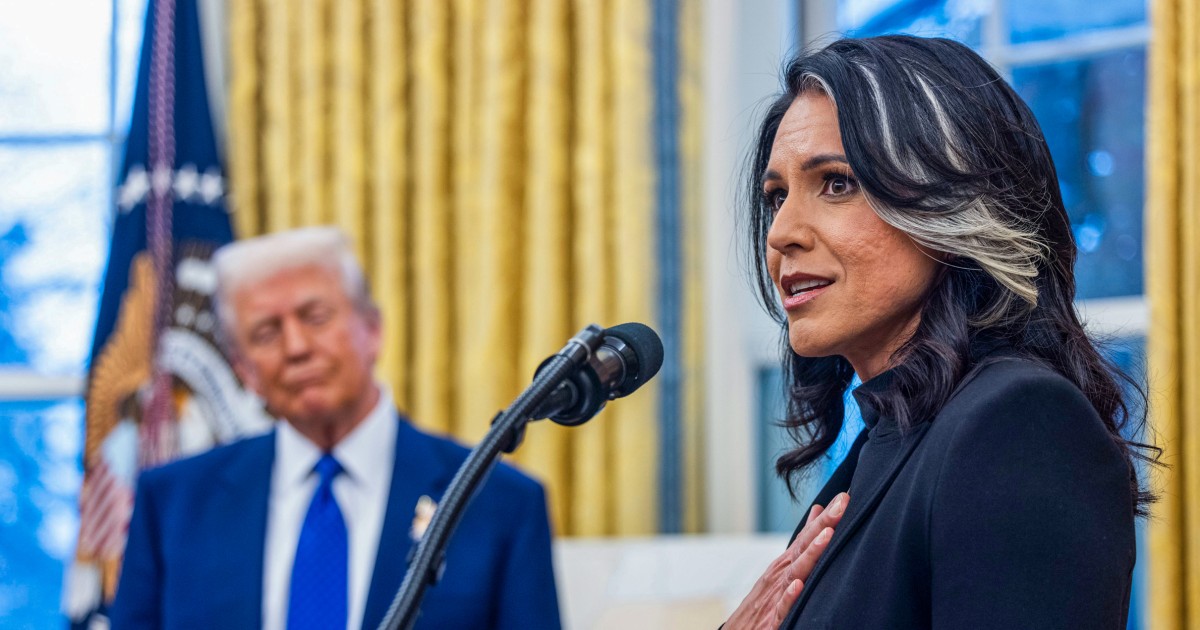National Intelligence Director Tulsi Gabbard is reportedly considering significant changes to how President Donald Trump receives daily intelligence briefings, aiming to create a more engaging and accessible format tailored to his preferences. This initiative comes from discussions with both current and past intelligence officials.
At the core of this effort is the President’s Daily Brief (PDB), a classified briefing designed to provide the President and key aides with crucial intelligence information. Gabbard has actively sought suggestions on how to adapt the PDB to better align it with Trump’s interests and preferred methods of information consumption. Among the ideas floated is a proposal to produce a video version of the PDB that resembles a Fox News segment, appealing to Trump’s well-known affinity for the network.
The current PDB format consists of a daily digital document that features written content supported by graphics and images. However, research into Trump’s briefing habits reveals that he has engaged with the PDB only 14 times since taking office, approximately once a week— a frequency lower than that of his recent predecessors. For context, President Joe Biden received 90 PDBs in the same period, while Barack Obama received 63, and Trump in his first term had a total of 55 briefings.
Insiders believe Trump’s limited engagement with the PDB could stem from his preference for information presented in a more dynamic format, coupled with a longstanding skepticism towards intelligence agencies, which he has accused of surveillance during his 2016 campaign. Despite potential changes in presentation style, the core substance of the intelligence provided is expected to remain intact.
In response to inquiries surrounding these developments, DNI Press Secretary Olivia Coleman dismissed the reports as “laughable, absurd, and flat-out false,” maintaining that Gabbard is committed to ensuring that the President receives timely and objective intelligence. Meanwhile, White House Spokesman Davis Ingle described the coverage as “libelous garbage from unnamed sources.”
Historically, the PDB has been adjusted to meet the preferences of various Presidents. During Trump’s first term, it shifted to a format with fewer written words, emphasizing visuals instead. Gabbard’s considerations reportedly involve more substantial transformations, including hiring personnel from Fox News to produce the content, resulting in a format that could be viewed on demand. Furthermore, discussions have hinted at incorporating more visually engaging elements, such as animated maps.
Traditionally, U.S. intelligence has utilized video presentations for various purposes, catering to the preferences of the President. Former officials noted that Trump has a tendency to prefer verbal briefings and direct engagement over lengthy written materials. During his first term, the PDB evolved into a one-page outline, frequently presented verbally rather than in a comprehensive written report.
Gabbard’s prospective changes also involve adjusting the content focus of the PDB to include more information on issues significant to Trump, such as economic matters, while potentially reducing emphasis on broader geopolitical themes like the war in Ukraine.
While it is customary for intelligence briefings to reflect the interests of the current administration, there are growing concerns about the integrity of intelligence assessments under Gabbard’s leadership. Reports have surfaced regarding her chief of staff requesting revisions to intelligence assessments that were seen as conflicting with Trump’s immigration policies, prompting scrutiny from congressional Democrats and raising alarms about potential politicization of intelligence.
Rep. Jim Himes of Connecticut, the leading Democrat on the House Intelligence Committee, expressed concerns, stating, “Absent evidence to justify the firings, the workforce can only conclude that their jobs are contingent on producing analysis that is aligned with the president’s political agenda, rather than truthful and apolitical.”
In conclusion, while Gabbard’s proposals for reshaping the PDB aim to bolster the President’s engagement with intelligence, they also raise critical questions about maintaining objectivity and accuracy in the intelligence community amidst the political landscape.
